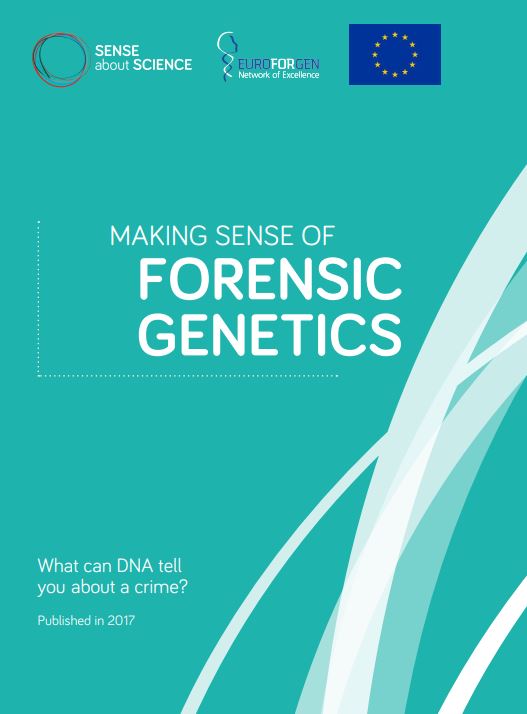
What can DNA tell you about a crime?
Forensic genetics is an increasingly complex field and its use in the criminal justice system is often misrepresented and misunderstood.
Published: 25 January 2017
All our guides are date stamped and reflect the scientific findings and knowledge available at the time of publication.
We all enjoy a good crime drama and although we understand the difference between fiction and reality, the distinction can often be blurred by overdramatised press reports of real cases. As a result most people have unrealistic perceptions of the meaning of scientific evidence, especially when it comes to DNA, which can lead to miscarriages of justice.
Denise Syndercombe Court, EUROFORGEN researcher
DID YOU KNOW…? We’re constantly shedding skin cells into our environment. But not everyone does this at the same rate. People who shed lots of skin cells — ‘high status shedders’ —are more likely to deposit DNA. A recent study found that people with atopic dermatitis shed four times as much DNA as healthy individuals.
DOWNLOAD MAKING SENSE OF GENETICS PDF
BACKGROUND
DNA is present in most cells of our body. It is unique to each of us, and we leave a trail of it everywhere we go. Forensic investigators take advantage of this, using our DNA to draw conclusions about where we’ve been and who we’ve interacted with. DNA analysis has revolutionised forensic science. However, forensic experts have raised concerns that how DNA can be used in criminal investigations and in court is often misunderstood and misrepresented.
EUROFORGEN researchers invited Sense about Science to work on a public engagement project, to address these misconceptions and produce Making Sense of Forensic Genetics. This guide shares what DNA analysis can currently do in the criminal justice system, what its limitations are, and what might be possible in the future. It includes graphics and real-life cases where DNA evidence has been a game changer in investigations as well as where its misuse has led to miscarriages of justice. We hope this guide will be a useful resource to anyone who works with, or crosses paths with DNA evidence in the criminal justice system.
PARTNERS
This guide was the result of a public engagement partnership with forensic DNA researchers at EUROFORGEN (European Forensic Genetics Network of Excellence). See their declaration of interests. The guide has received financial support from the European Union Seventh Framework Programme (FP7/2007-2013) under grant agreement n° 285487.
WHAT IS THE PROBLEM THIS GUIDE IS ADDRESSING?
Forensic genetics is an increasingly complex field and its use in the criminal justice system is often misrepresented and misunderstood. For example, some police departments are currently using forensic DNA technology that has not been scientifically validated. The researchers from EUROFORGEN were prompted to launch this guide by public misconceptions about forensic genetics, and aim to inform readers about how DNA can and can’t be used in criminal investigations and in court.
They share their insights that:
- Despite claims to the contrary, predicting visible traits such as face shape from DNA is not currently possible. There are reports of police departments using tests that claim to predict face shape, but these tests are not scientifically validated. The latest advances in forensic genetics are beginning to enable some externally visible characteristics including hair and eye colour to be predicted from someone’s DNA. This could be a powerful investigative tool in future. But there are limits to what we can currently tell from DNA.
- Your DNA could be in a room even if you weren’t. Our DNA is everywhere – it can be transferred by saliva from talking, sneezing, coughing and by shedding skin cells. There is even DNA present in house dust. So DNA from individuals who have nothing to do with a crime might be present at a crime scene.
- DNA alone doesn’t solve crimes. Advancements in forensic DNA techniques mean that we can now detect minute traces of DNA. The presence of DNA doesn’t establish guilt – and doesn’t necessarily tell us when or how it got there or the body tissue it came from (particularly for very small amounts). Therefore, context has become increasingly key, and now more than ever, DNA needs to be viewed within a framework of other evidence. It’s an important detection tool, but it’s certainly not a detective.
NOTES
On 2 March 2017 minor text changes were made: on page 29 lines 15-16 we removed ‘commonly used’ and inserted the word ‘as’ before ‘available’.





